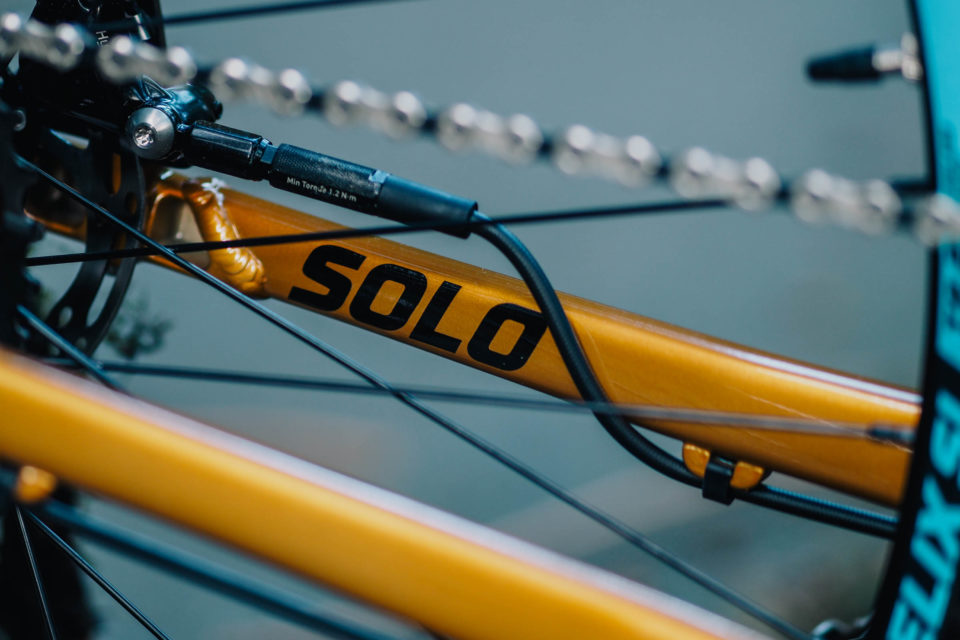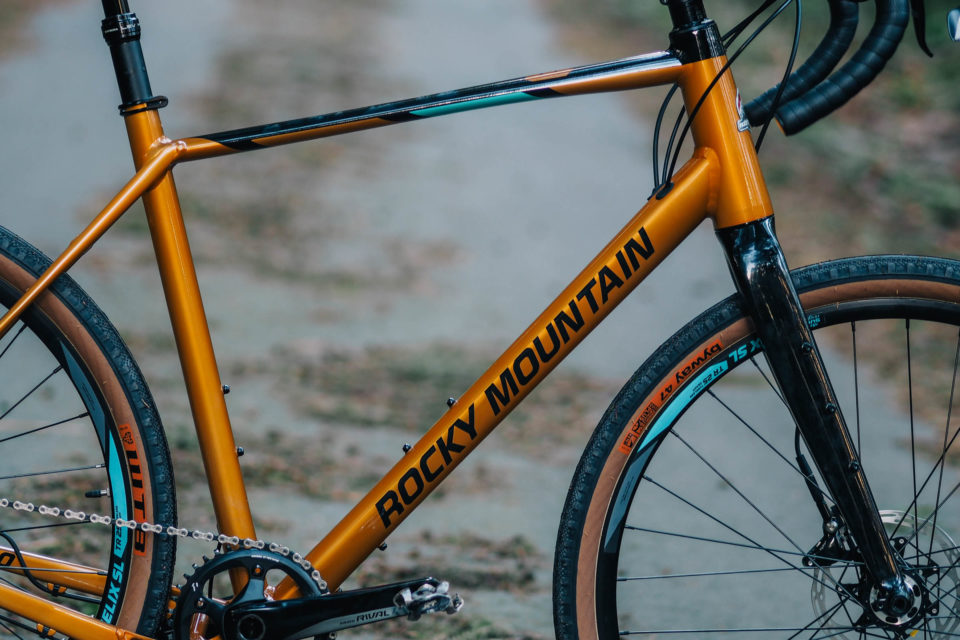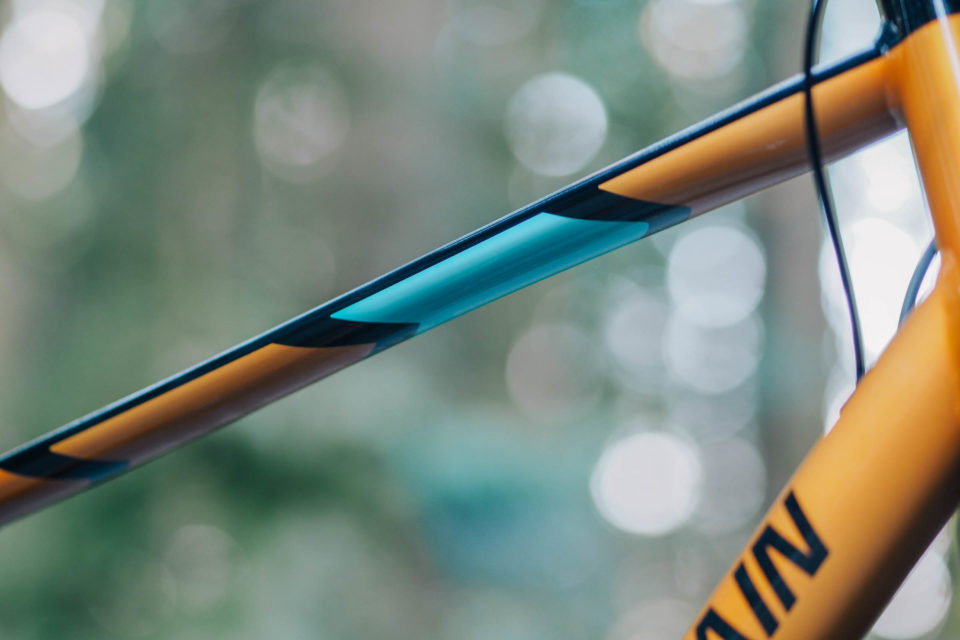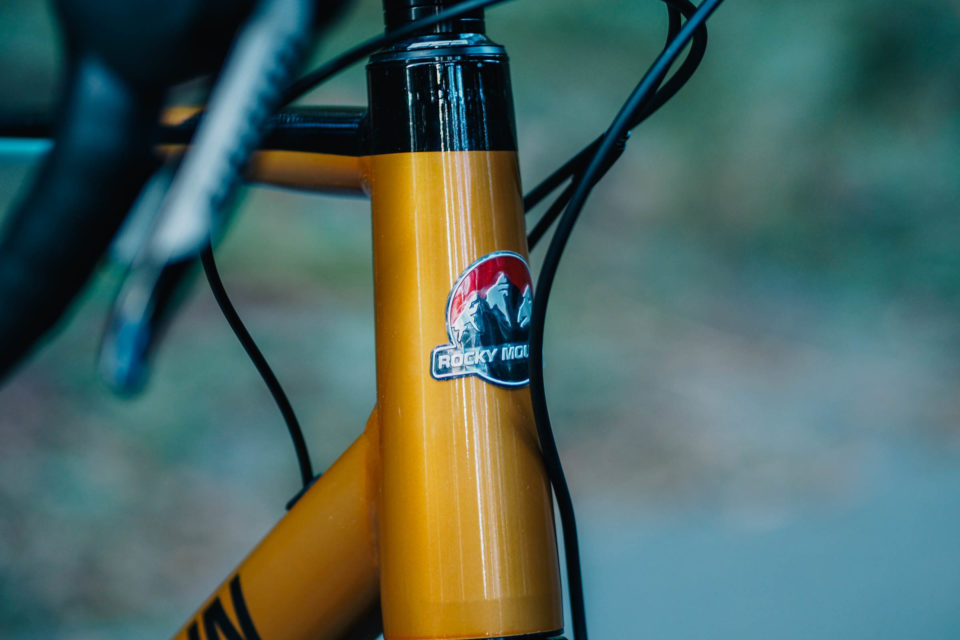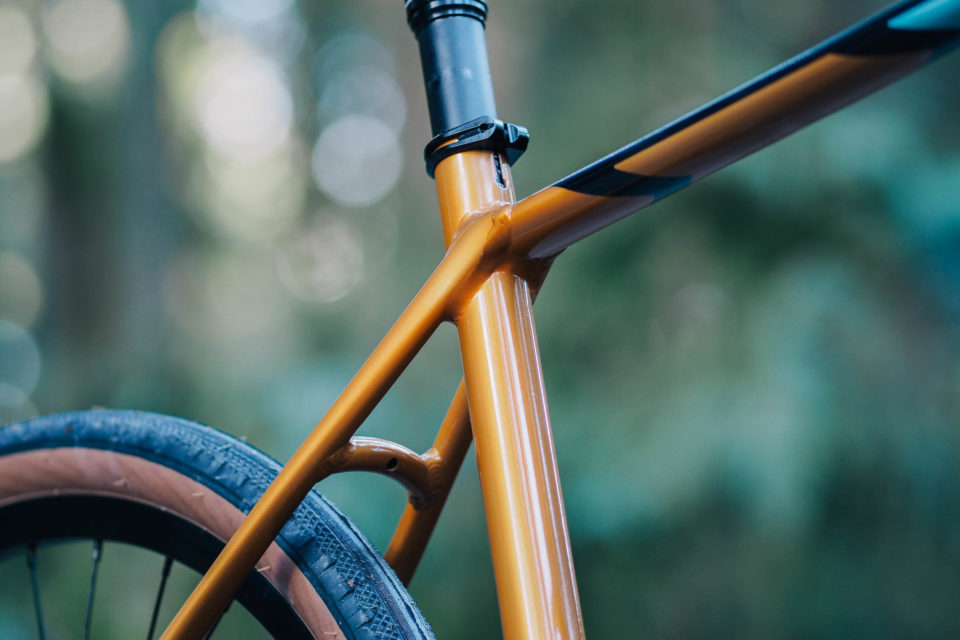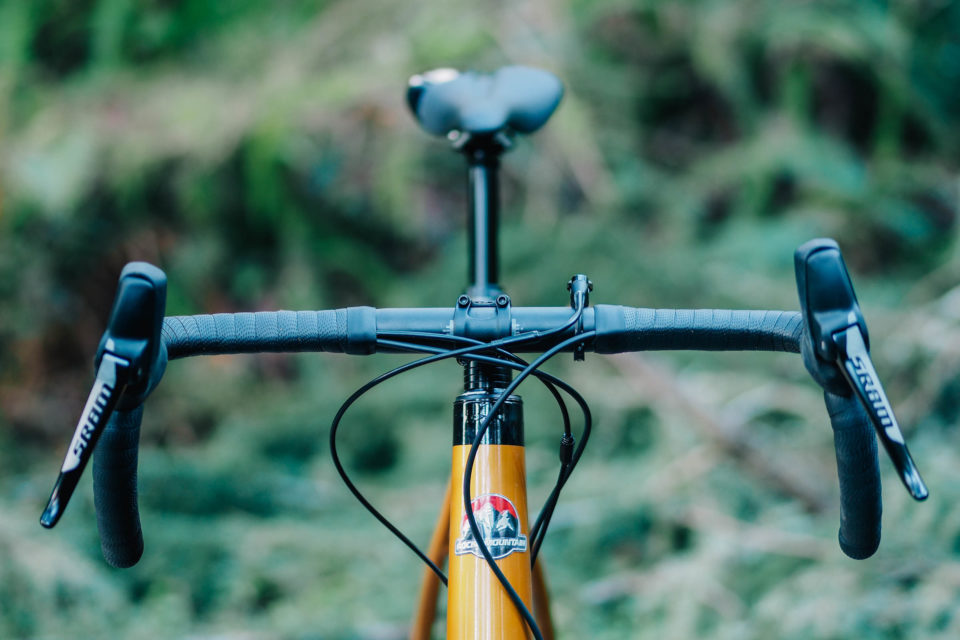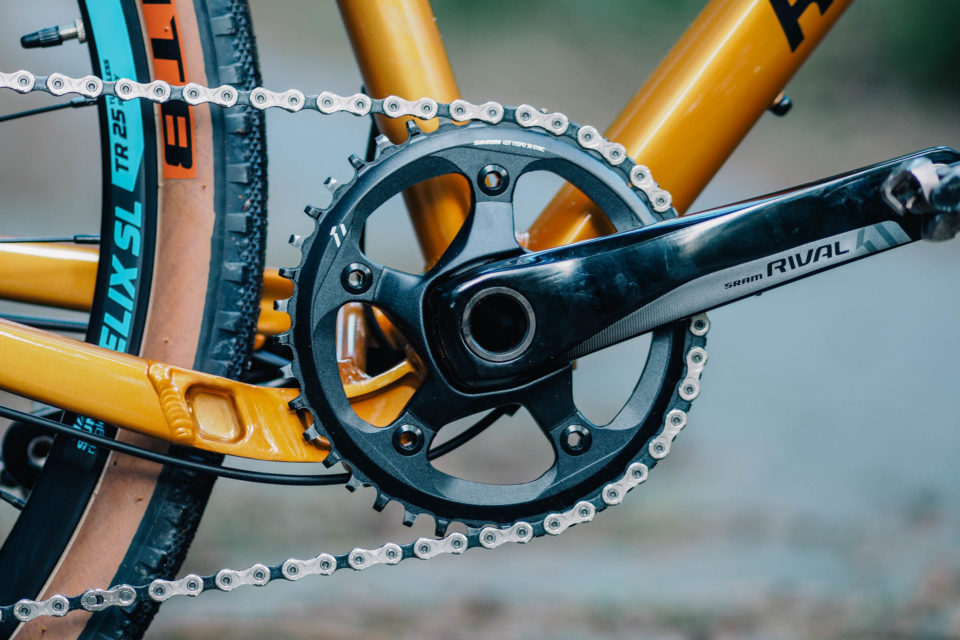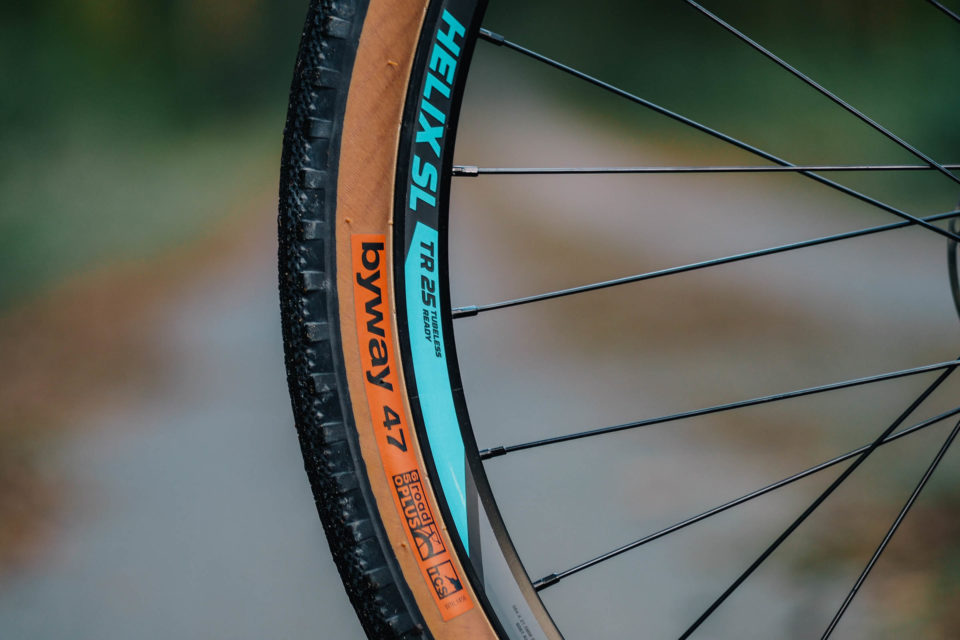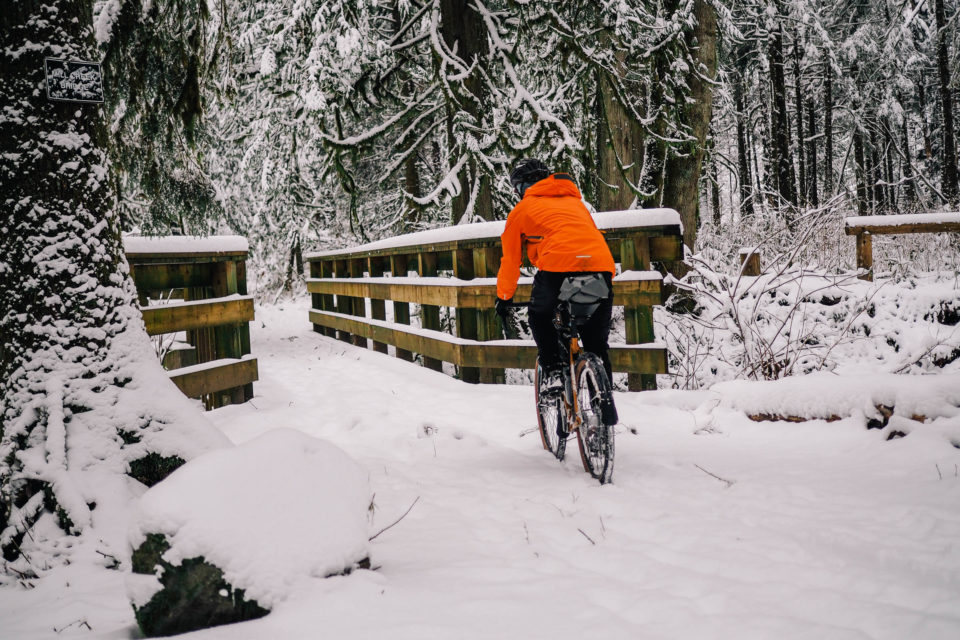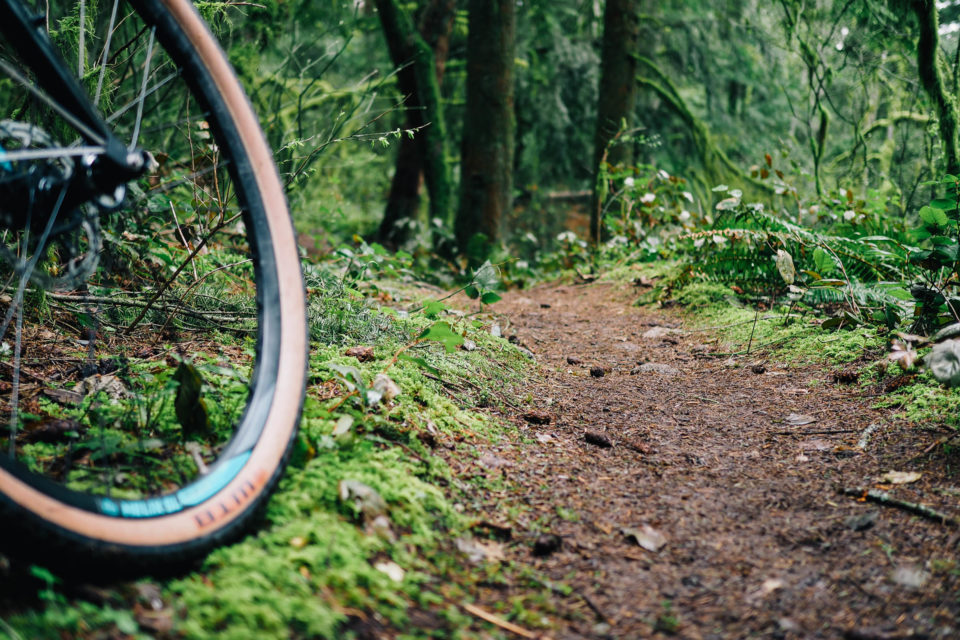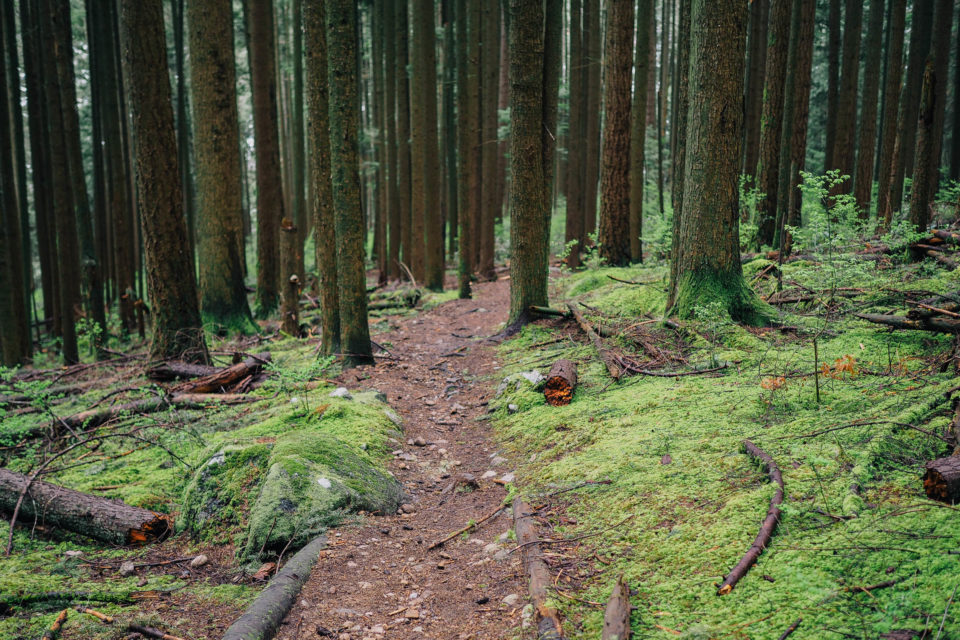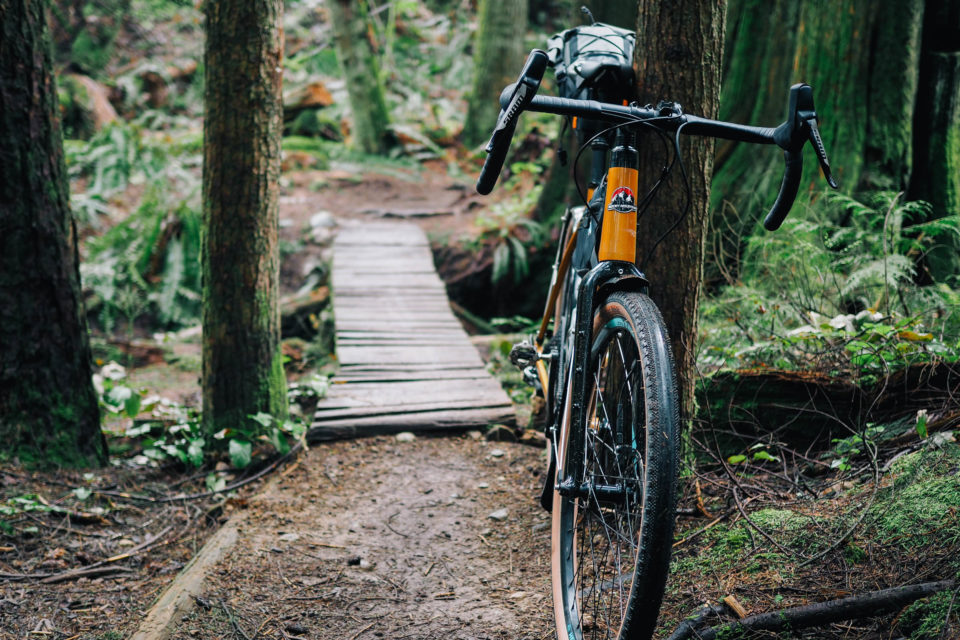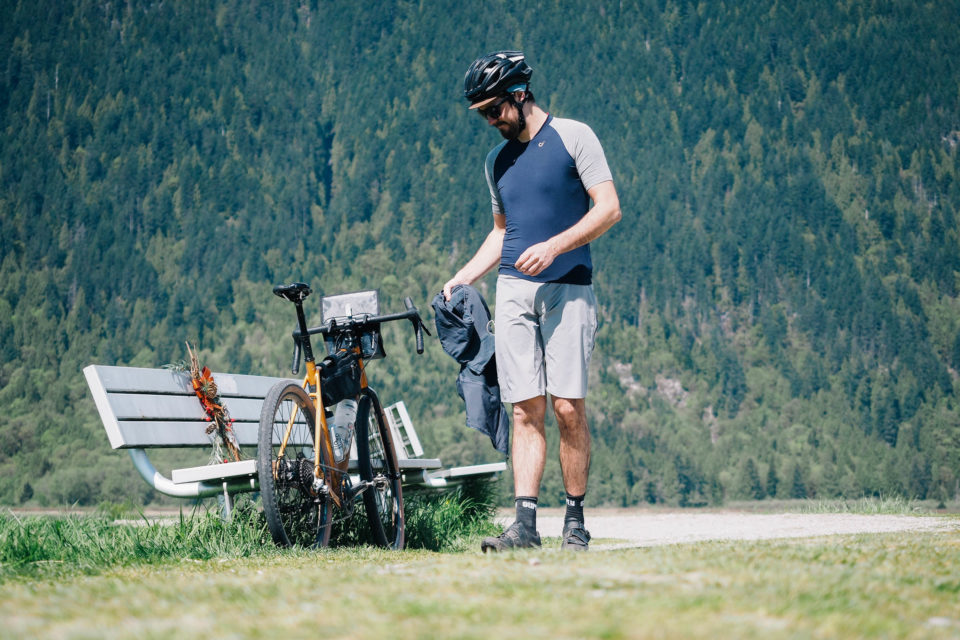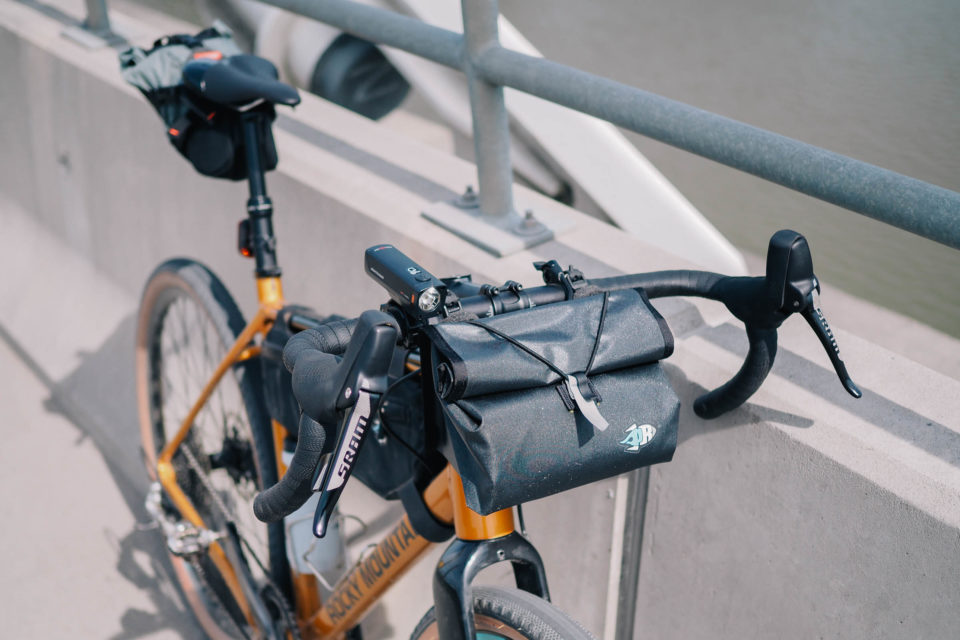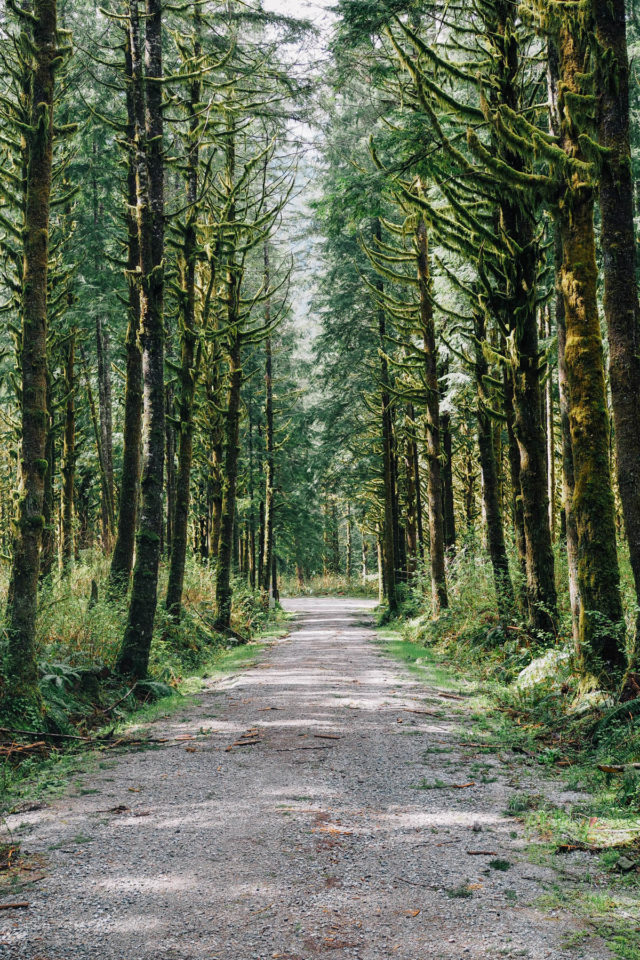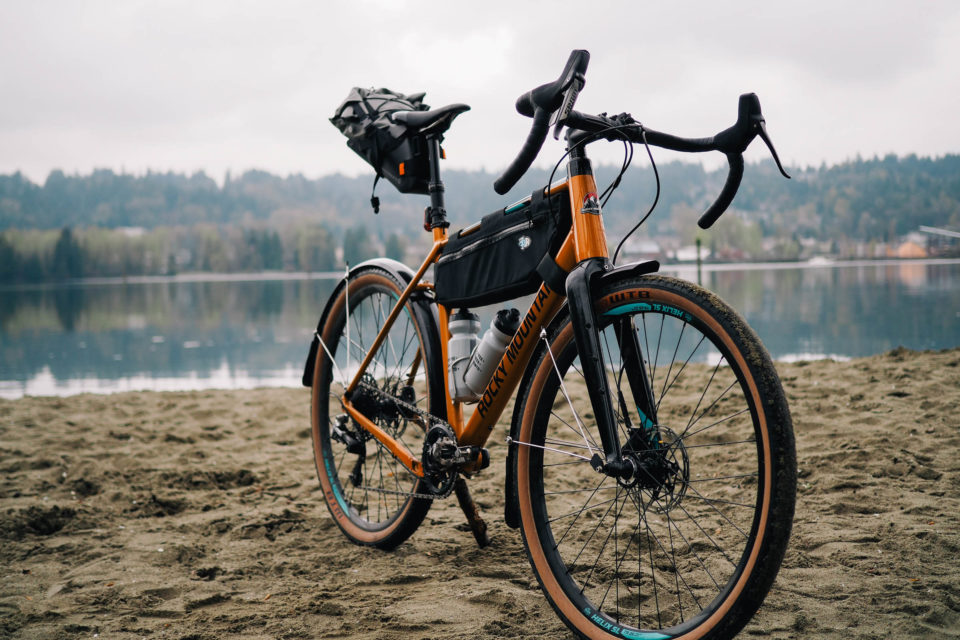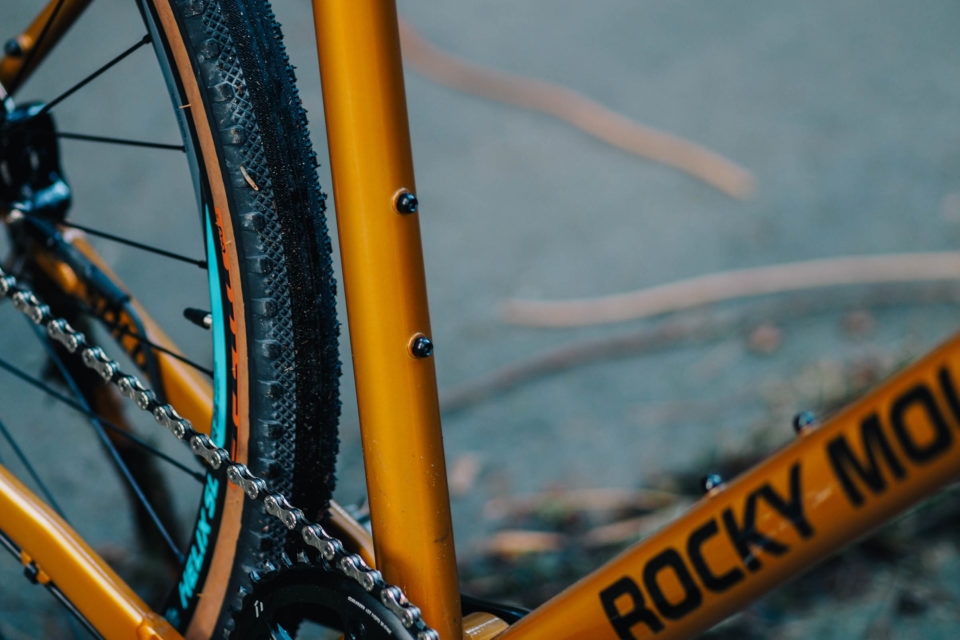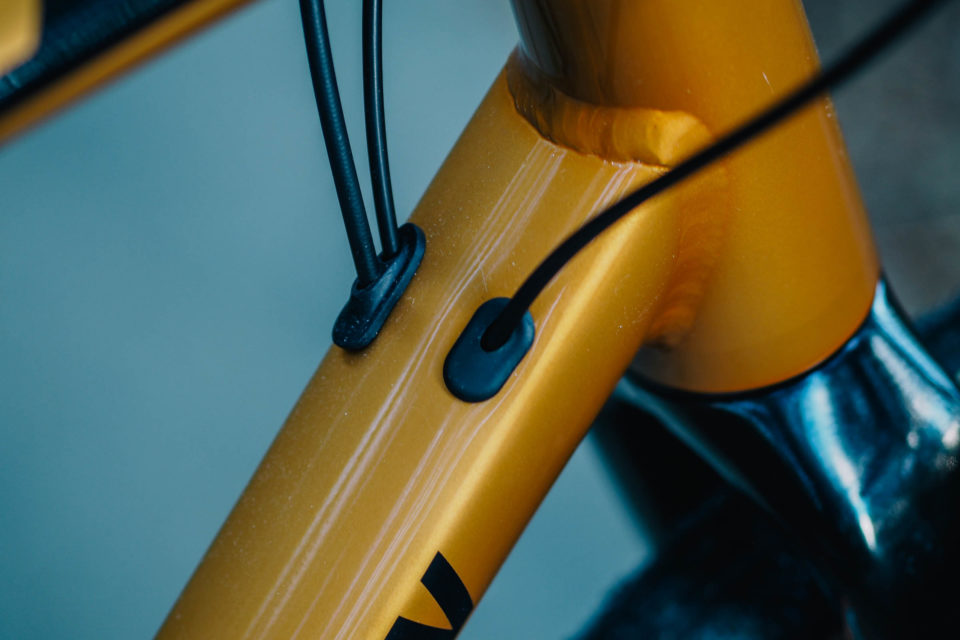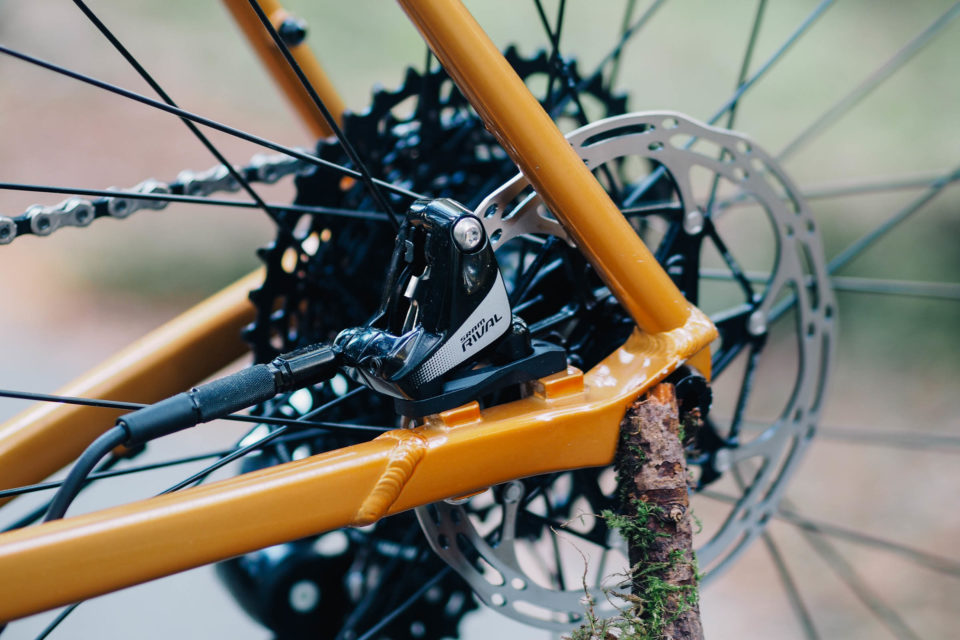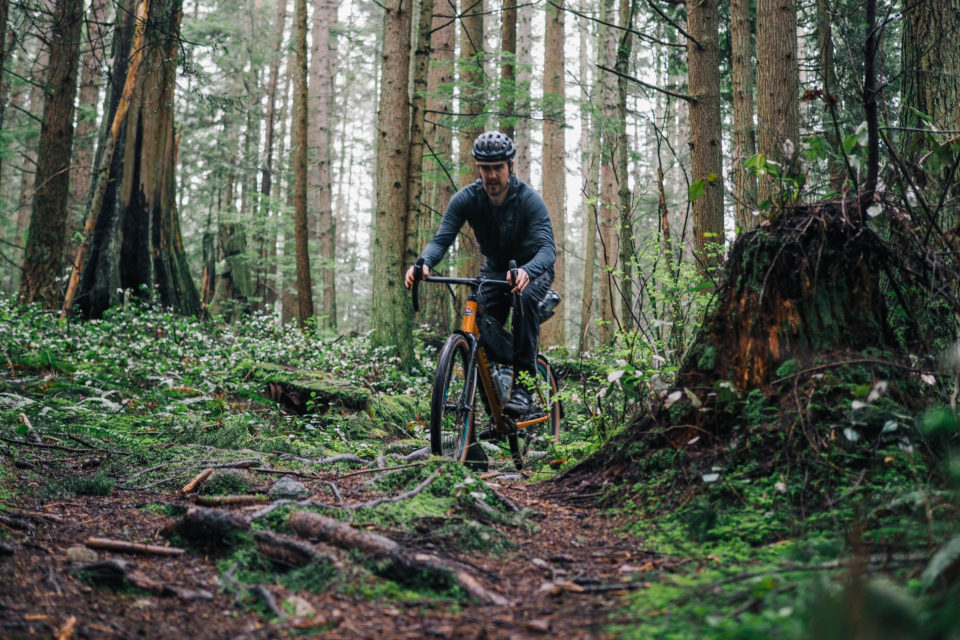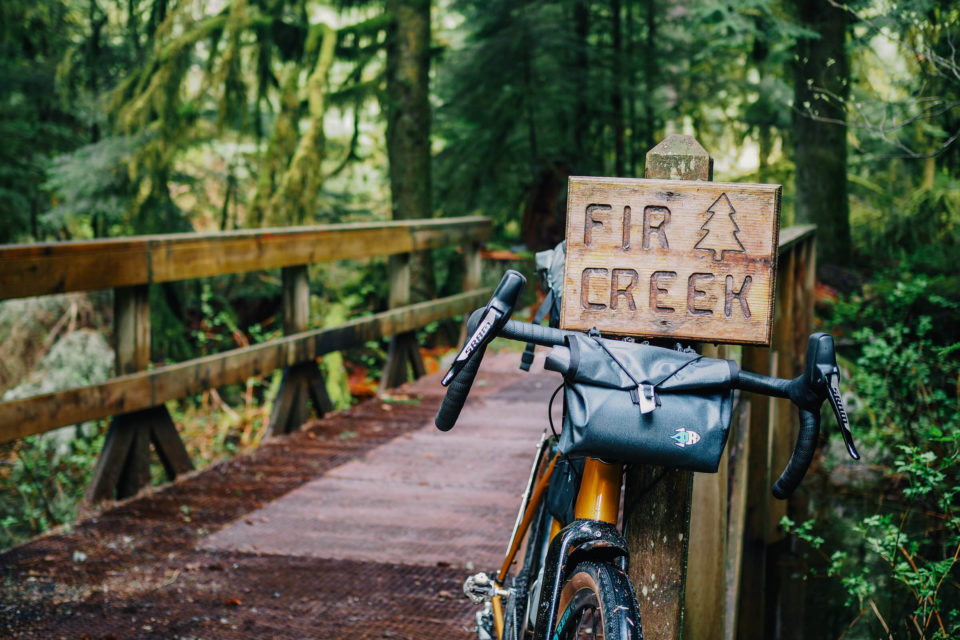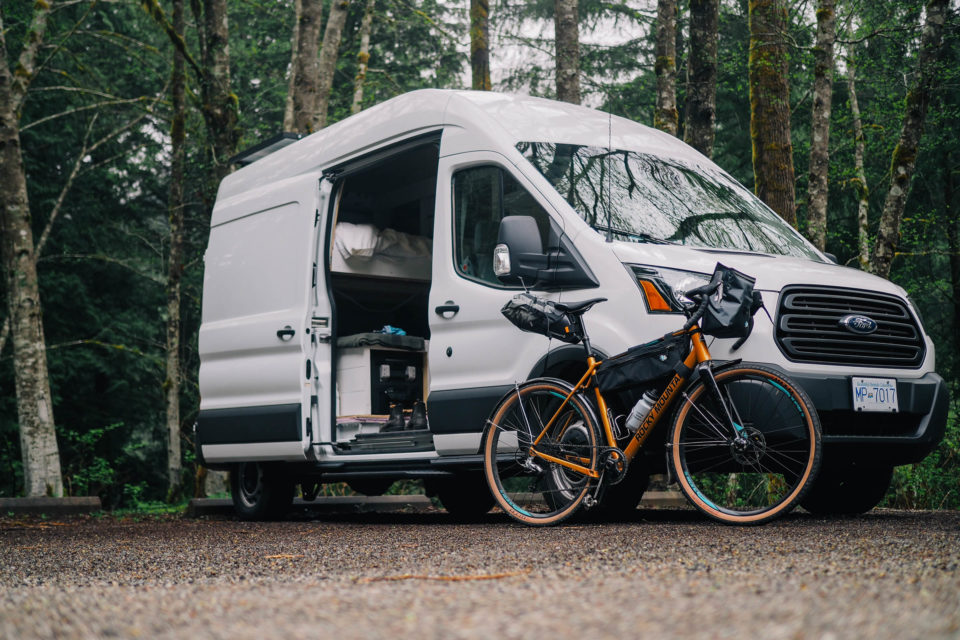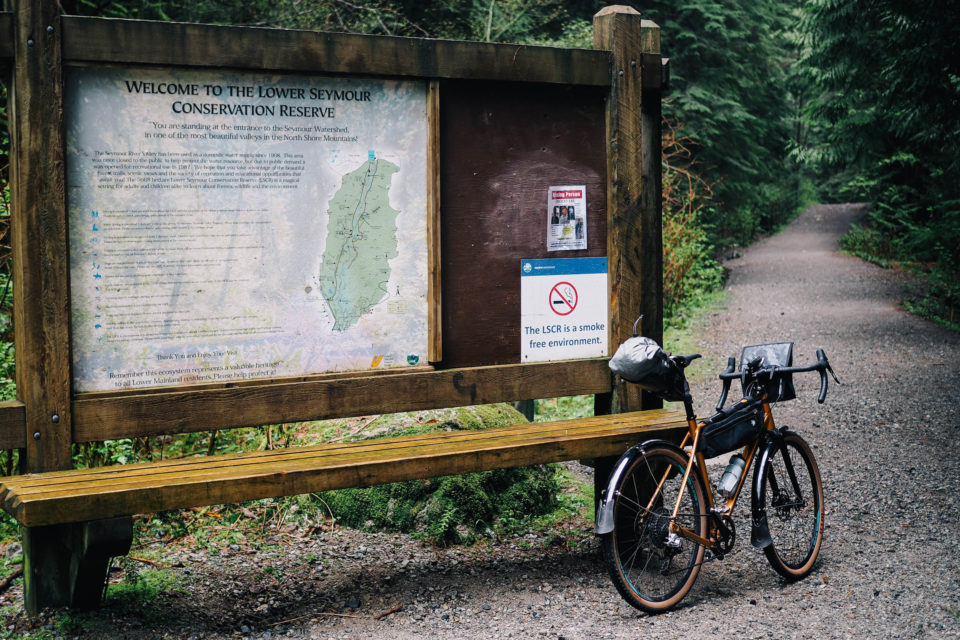Rocky Mountain Solo Review: Making Roads Great Again
Share This
The Rocky Mountain Solo is an outlier within the brand’s mountain bike focused lineup. The 2019 Solo 70 has seen a few updates, including new drivetrain specs, a dropper post, and high volume 650B tires. Miles spent the winter seeking out gravel paths and quiet paved roads on British Columbia’s west coast, mixing up bikepacking and all-weather commuting. Find the full review below…
As some of our readers may very well already know, the Solo has existed in Rocky Mountain’s lineup in a few different forms over the years. From road to cyclocross, and now as a gravel-ready adventure rig, the newest take on the Solo is right on trend with the drop-bar gravel bike hype that has been dominating the industry the past few years. However, unlike the majority of bikes in this category, the Solo doesn’t sport a carbon or steel frame. Instead, it’s built from a butted 6061 SL Series Alloy, which helps keep the price in check and the stoke high.
The 2019 Rocky Mountain Solo 70 has seen a few changes from the 2018 model, including the downgrade from a SRAM Force drivetrain to Rival, the introduction of a dropper post, and the switch to 650b wheels and high volume tires. In short, the drivetrain was down specced in order to make some room for fun new parts, and actually allowed Rocky to drop the price by $50 CAD, a welcome change.
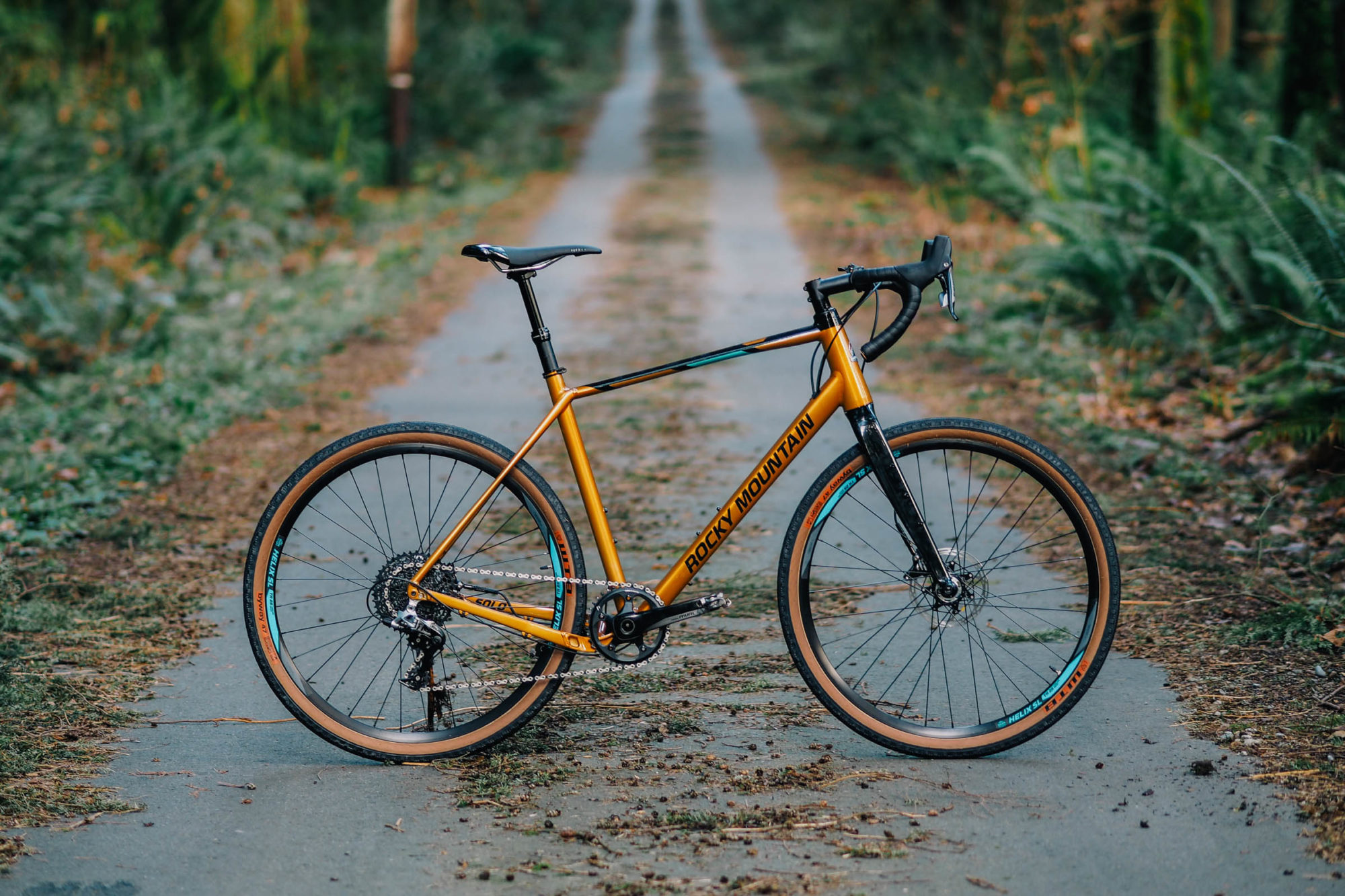
For 2019, there are now three different build options: the 70 at $2,599; the Solo 50 at $1,999, specced with a SRAM Apex drivetrain, no dropper post, and 700 x 40c tires; and the Solo 30 at $1,499, still with Apex parts but mechanical TRP disc brakes and downgraded SRAM PG-1130 cassette. All three builds include Rocky Mountain’s Carbon Gravel fork, offering three-pack mounts, fender mounts, and a 15mm thru-axle. Without looking much further than that, the Solo is priced fairly and the three different builds should accommodate a good range of budgets out there.
- Highlights
- Angles: 71° Headtube, 73.5° Seattube
- Chainstay: 425mm
- Bottom Bracket: Press Fit BB386
- Hub specs: 15 x 100mm (front); 12 x 142mm (rear)
- Seatpost Diameter: 30.9mm
- Max Tire Size: 650b X 2.2″ / 700 X 45mm
- Weight: 23.5 POUNDS (10.6 kg)
I jumped on the opportunity to take the top end Solo 70 under my wing for the last few months, acting as an all-weather commuter, weekend gravel bike, and side-road exploration machine. Tackling snow, slush, rain, and eventually some dry dirt and pavement this spring. Read on for my thoughts on why the Solo might just be a mountain biker’s favourite road bike.
Not A Mountain Bike
Looking back at some of my recent drop-bar bike reviews, including the Norco Search XR and Bearclaw Thunderhawk, I’ve seemed to develop an urge to push gravel-friendly bikes into terrain that would have been considerably more enjoyable on a hardtail mountain bike. It’s not uncommon to see marketing lingo that promises it will be the last bike you’ll ever need, boasts adventure-ready features, plus updated geometry to make THIS bike a quiver killer. I have to admit I get pretty caught up in all of this, and often assume all of our readers want to know just how gnarly things can get on these types of bikes. This time around, I acknowledged that not all drop-bar gravel / all-road bikes are designed for loaded bikepacking on singletrack-heavy routes. We can’t forget about the seemingly tame, yet incredibly fulfilling, opportunities that side roads, gravel, and paved routes can offer us. The Rocky Mountain Solo is not a mountain bike, and it won’t replace yours. Mountain bike tires, front suspension, and wide, flat bars really do work, leaving a place for lightweight bike trips on a mix of paved and unpaved roads and paths. Or in the case of the updated 2019 Solo 70, I can comfortably refer to it as a mountain biker’s road bike. Of course, I didn’t forget to tackle a few blues and blacks for the sake of science.
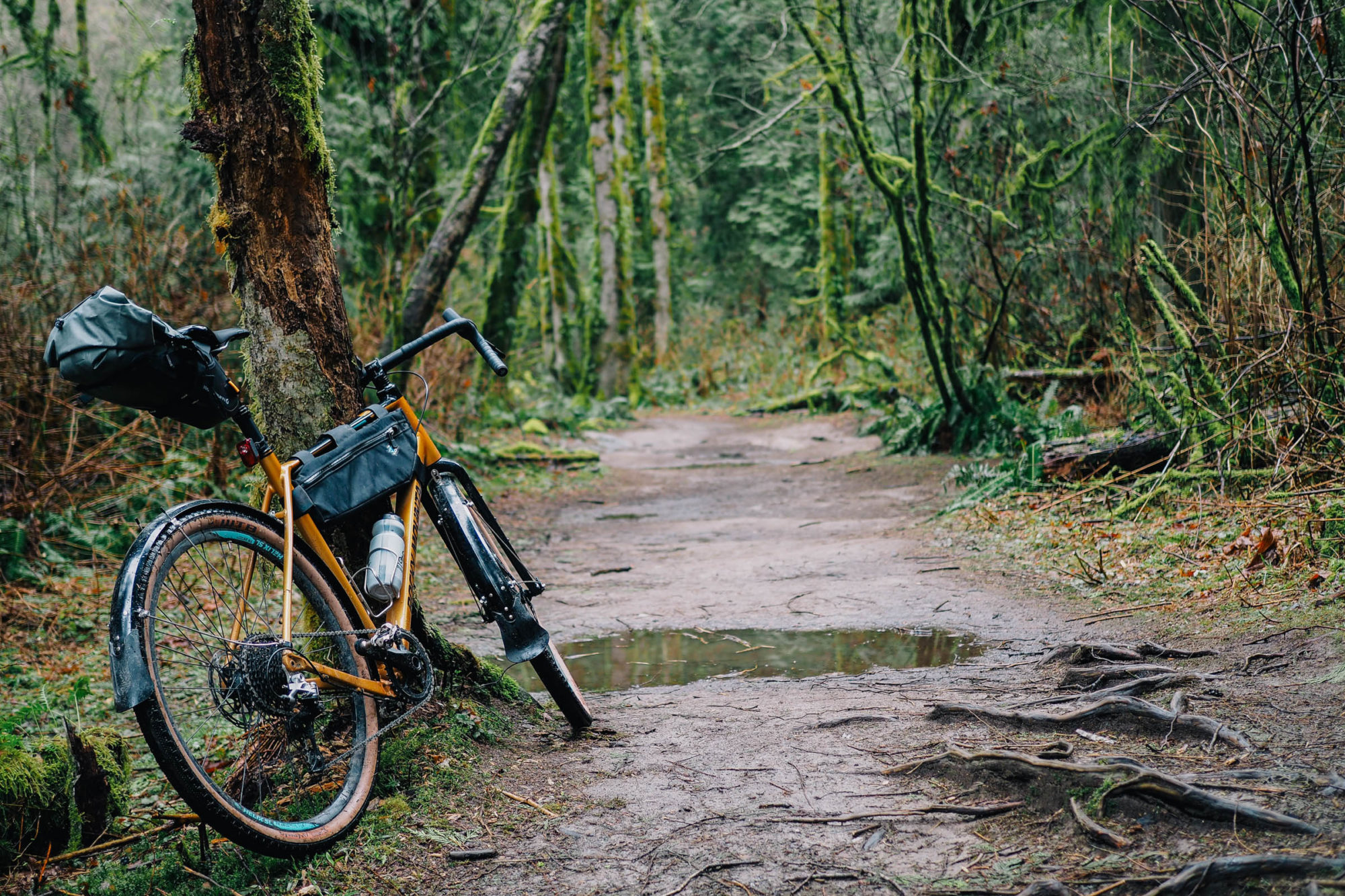
The Rocky Mountain Solo fits in nicely within our list of 650b gravel bikes and monstercross bikes. The Solo 30 and 50 come stock with 700c x 40 WTB Nanos, a great high volume gravel tire that can take a beating. The model tested here, the Solo 70, comes with a road plus wheelset, including tubeless-ready 650b x 47c WTB Byway tires. Compared to the tires that came specced on the other gravel bikes I’ve reviewed, these are much more road-oriented, and although they performed better than expected off road, it took some time getting used to the massive slick centre tread that had me slipping around in wet conditions. Where they lacked grip, the Byway’s made up for with speed and versatility, zipping along gravel paths and pavement and shedding mud almost immediately. They are a big road tire, with a touch of side knob to keep things in check, and ultimately kept my riding in check as well.
Both wheels came taped for tubeless, valves included, and caused little fuss setting up with a floor pump. My only tire-related issue came in the form of a frustrating puncture that wouldn’t quite seal up, probably caused from picking up some tiny road debris. Turns out it’s a good idea to pack tire plugs on multi-surface adventures as well. I have to say it was refreshing to mix more pavement into my riding, both while commuting and when travelling to find new trails. The Solo was a great option for getting around and exploring new places, plus it still felt nimble when lightly loaded up with gear.
How the Solo 70 Stacks Up
When compared to the Norco Search XR and Bearclaw Thunderhawk, the Solo proves that not all bikes in this category are equal. There are some notable differences in geometry that sets each of these apart from the others, which will hopefully help potential buyers differentiate among them.
First up, the Solo has a 71º headtube angle, a half degree slacker than the Thunderhawk and a full degree more than the Norco Search XR. I found the Solo to handle and track well down steep, loose gravel grades, which surprised me considering the more road-oriented tires. The Solo has a longer wheelbase, at 1057mm for the Large, which also happens to be a bit bigger than the Thunderhawk and Search XR. Although the added length limits some of the playfulness that can make riding gravel bikes super fun, I don’t mind reserving a hardtail mountain bike for that sort of riding. Similar to many gravel bikes that offer big tire clearance, the Solo utilizes a dropped drive-side chainstay to accommodate different wheel options. Rocky Mountain clearly states that the Solo frame is optimized for a 1x drivetrain only, which could be upsetting for those 2x diehards out there.

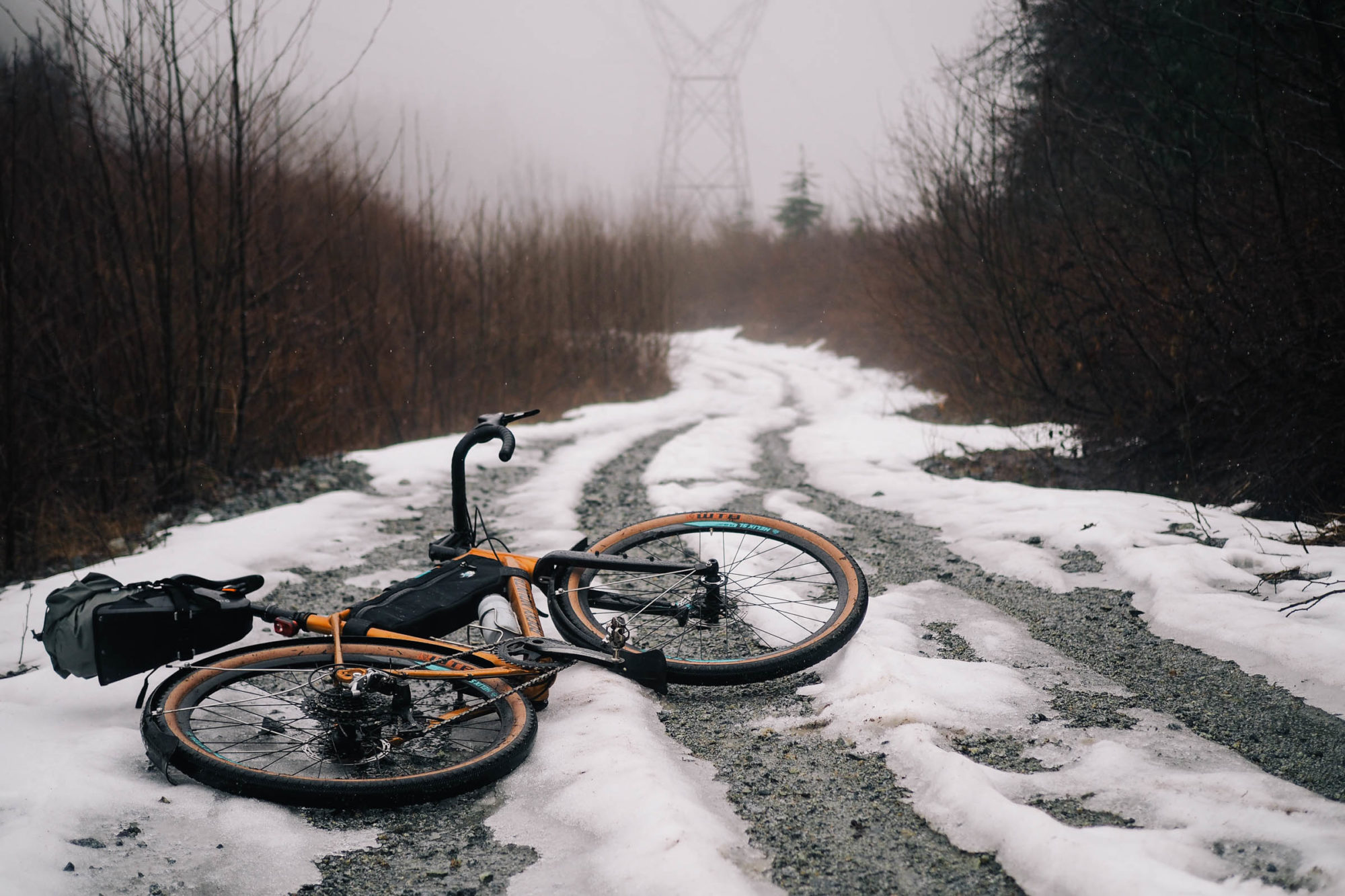
All things considered, I would put the Solo further on the road end of the spectrum than both the Norco and the Bearclaw. It’s fast, zippy, and feels more at home on hard packed surfaces, both paved and unpaved. Maybe a shorter stem, smaller front chainring, and grippier tires would increase its overall versatility, but I wasn’t interested in adapting the Solo to meet my usual demands this time around. With that said, the Solo 70 still offers most of the features we want to see from drop-bar gravel bikes, including fender mounts, rear rack mounts, and two bottle mounts in the main triangle plus another on the downtube. Rocky’s Carbon Gravel Fork offers cargo cage mounts and massive clearance for both the stock 650b x 47mm tires and full-coverage Planet Bike Cascadia ALX fenders that I was running this winter. The 2019 Solo 70 also takes advantage of the dropper post routing, speccing a KS LEV Integra dropper. The stock build definitely keeps up with the trends and makes for a super fun build. However, I do have a few items to nitpick.
Nitpicking the Details
There are a few aspects of the Solo 70 that didn’t quite do it for me. Although individually they may be small, I expected more from a modern gravel bike designed to ride “anywhere and everywhere.” First, the cargo cage mounts on the fork are angled forward, which pretty much eliminates the possibility of running a front rack properly, adding in rack-specific mounts that run parallel to the frame of the bike would open up more storage opportunities. I also had some issues with the positioning of the rear fender lower seat stay mounts, but got things to work with some rubber p-clamps.
Rocky Mountain’s Flare Drop bar seemed to be a good width for the bike, but the actual length of the drops didn’t quite do it for me. I don’t spend much time riding in the drops, and reserve them for extra chunky descents for the most part, but I honestly don’t think I spent anything more than a few minutes in the Solo’s. The drops end a bit too early for my liking, preventing me from finding a comfortable and secure position. Also, the noticeably thin stock bar tape and alloy bar wasn’t enough for me, so a bar and tape swap would be one of the first changes I would make.
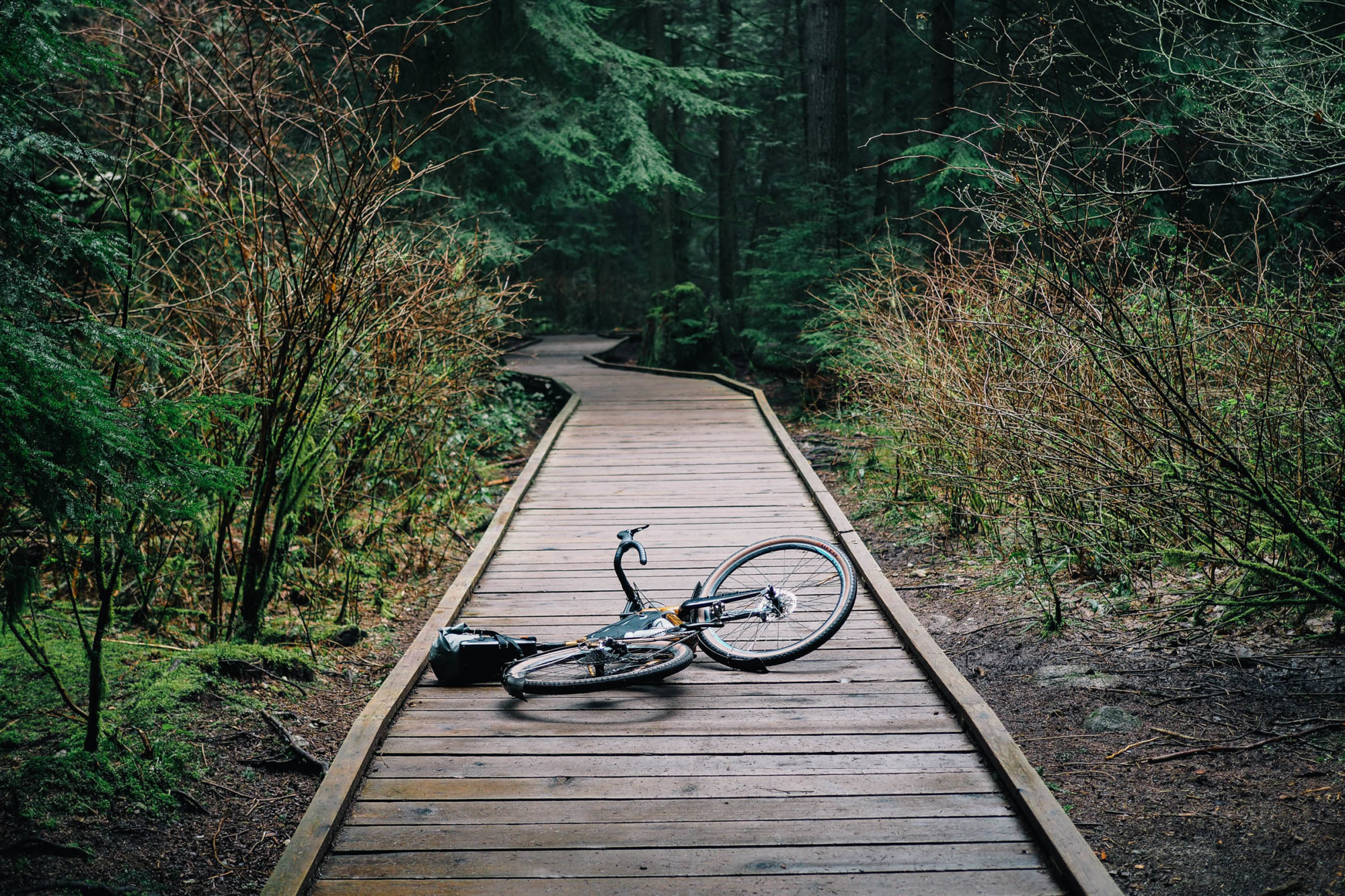
Finally, and this could just be me, but the bar-mounted dropper post lever is a huge miss. I believe it was in 2017 when we first saw companies making use of the left road shifter to actuate the dropper post, which makes complete sense when running a 1x drivetrain. The Norco Search XR had this feature, and although I’m not totally sold on running a dropper on a drop-bar gravel bike, I definitely found the shifter actuated method to make a lot more sense. The last thing I want to do before dropping my post is take a hand off the bars and find a tiny lever positioned close to my stem. That’s just asking for trouble. I will commend Rocky Mountain for keeping all the cables in check up front, leaving plenty of room for a handlebar harness or small front bag like the Porcelain Rocket Nigel I’ve been using.
Build Kit
I was quite happy with the Solo 70’s build kit, and felt it offered a great blend of off-road capability and on-road performance. The SRAM Rival drivetrain was adequate enough and only needed some minor adjustment of cable tension and a few post-winter cleanings to keep things running smoothly. The stock WTB Byway tires offer enough volume to be both comfortable on rough roads while also grippy on most hard pack terrain I encountered. Most recently I have noticed several smaller punctures on both the front and rear tires, mainly in the slick centre area of the tread. Everything has sealed up fine with sealant, but that’s a good sign that I have been pushing them a bit too hard. I may have had a different experience if I stuck to only packed gravel and pavement. As I mentioned above, the KS LEV dropper post is a fun touch, but the lever location really bugged me. The Sun Helix TR25 rims are tubeless ready, came taped, and included valve stems. Although some may upgrade down the road, the wheelset performed great during the majority of my testing period.
Another change from the 2018 to 2019 Solo included a downgrade in the rear hub, from a SRAM HU 900 to the MTH 746. There have been documented issues with long term durability and reliability with the MTH 746, so it would have been nice to see no change at all here. I started to notice issues somewhere around 1,000km, first as a slight tick I decided to brush off, and most recently as a sloppy free hub that is surely in need of replacement. I can’t be certain that the lower spec hub is to blame, but from a bikepacking perspective I wouldn’t want to be dealing with this issue away from civilization.
- FRAME Butted 6061 SL Series Alloy
- SIZES XS,S,M,L,XL
- FORK Rocky Mountain Carbon Gravel
- CRANKSET SRAM Rival
- CHAINRING Rival 40T
- B/B Rocky Mountain Pressfit BB386
- CHAIN KMC X11-1
- Cassette Sram XG-1150 10-42T
- Derailleur Sram Rival 1
- SHIFTERS SRAM Rival
- BRAKE CALIPERS SRAM Rival 1 Disc
- FRONT BRAKE ROTOR SRAM Centerline 160mm
- REAR BRAKE ROTOR SRAM Centerline 180mm
- BRAKE LEVERS SRAM Rival 1
- HEADSET FSA Orbit NO.57E
- HANDLEBAR Rocky Mountain Flare Drop
- STEM Rocky Mountain AM
- SEATPOST KS Lev Integra 30.9mm
- SEAT CLAMP Rocky Mountain
- BAR TAPE Rocky Mountain Gel Bar Tape
- SADDLE WTB Silverado Race
- FRONT HUB Rocky Mountain Sealed 100x15mm
- REAR HUB Sram MTH 746 142x12mm
- SPOKES WTB 2.0
- RIMS Sun Helix TR25 SL Tubeless Ready
- FRONT TIRE WTB Byway Road Plus TCS 650bx47c*
- REAR TIRE WTB Byway Road Plus TCS 650bx47c*
*The 2019 Solo 70 should be shipped with WTB Venture Road Plus TCS 650b x 47c tires, as listed on Rocky Mountain’s build kit chart.
Bikepacking, Commuting, and Day Rides
I spent the majority of my time with the Solo 70 tackling long commutes, epic all-day adventures, and some spring bikepacking. It felt best loaded up lightly, so I stuck with that approach during my review period. My kit consisted of a simple partial frame bag from Porcelain Rocket, plus the updated Nigel handlebar bag. I swapped between the Blackburn Outpost Elite Universal Seat Pack and a smaller Rockgeist Gondola Dropper Post Saddle Bag. While out bikepacking, I focused on a minimal packlist, taking care to adjust my tire pressure often to suit the terrain. Multi-hour mixed surface rides were a joy loaded up with water and snacks for the day.
I kept my handlebars mostly unladen, which I believe added to my ability to be comfortable on a drop-bar bike. I’ve been working full-time at a local bike shop in the Vancouver area for the past four months, so I dedicated a good chunk of my time to commuting by bike. I’m more familiar with short commutes and a large Wald basket up front to pack extra clothes, a lunch, and a change of shoes, so commuting on the Solo required some change in strategy. I got into the habit of leaving some shoes at work, as well as a fresh t-shirt. This means I’ve gotten by with the same kit I outlined above, ready for a campout at a moments notice. The Solo offers fantastic versatility as a gravel bike, road bike, and dedicated commuter.
I have to admit that I rarely found myself making use of the dropper post that comes stock on the Solo 70, mirroring my experience with the Norco Search XR that I reviewed last year. I think the only time I dropped my saddle with purpose was on a small bike path to sidewalk transition that I rode regularly on my commute. Did it really demand the use of a dropper post? Absolutely not. I’ve spent enough time of bikes similar to this to confidently shrug my shoulders at gravel bikes equipped with dropper posts. It’s cool, I get it, but it’s not completely practical in my opinion.
So, What’s a Gravel Bike?
I had a great conversation with a friend and bike mechanic about the Solo’s build kit. A high volume semi-slick tire, dropper post, and race-ready geometry didn’t really add up for me. Yet this might be the dream ensemble for some of our readers. For some, a gravel bike means nothing more than 700x30c tires, aggressive geometry, and a high-end drivetrain. For others, perhaps the ability to run tires bigger than 2.5″ wide, all of the mounts, and a more relaxed riding position is the ticket. In any case, there are a lot of different ways to interpret what a drop-bar gravel is… and isn’t. Make sure to check out our list of 650b Gravel Bikes, a huge list of drop-bar bikes with clearance for 2.1” tires and larger.
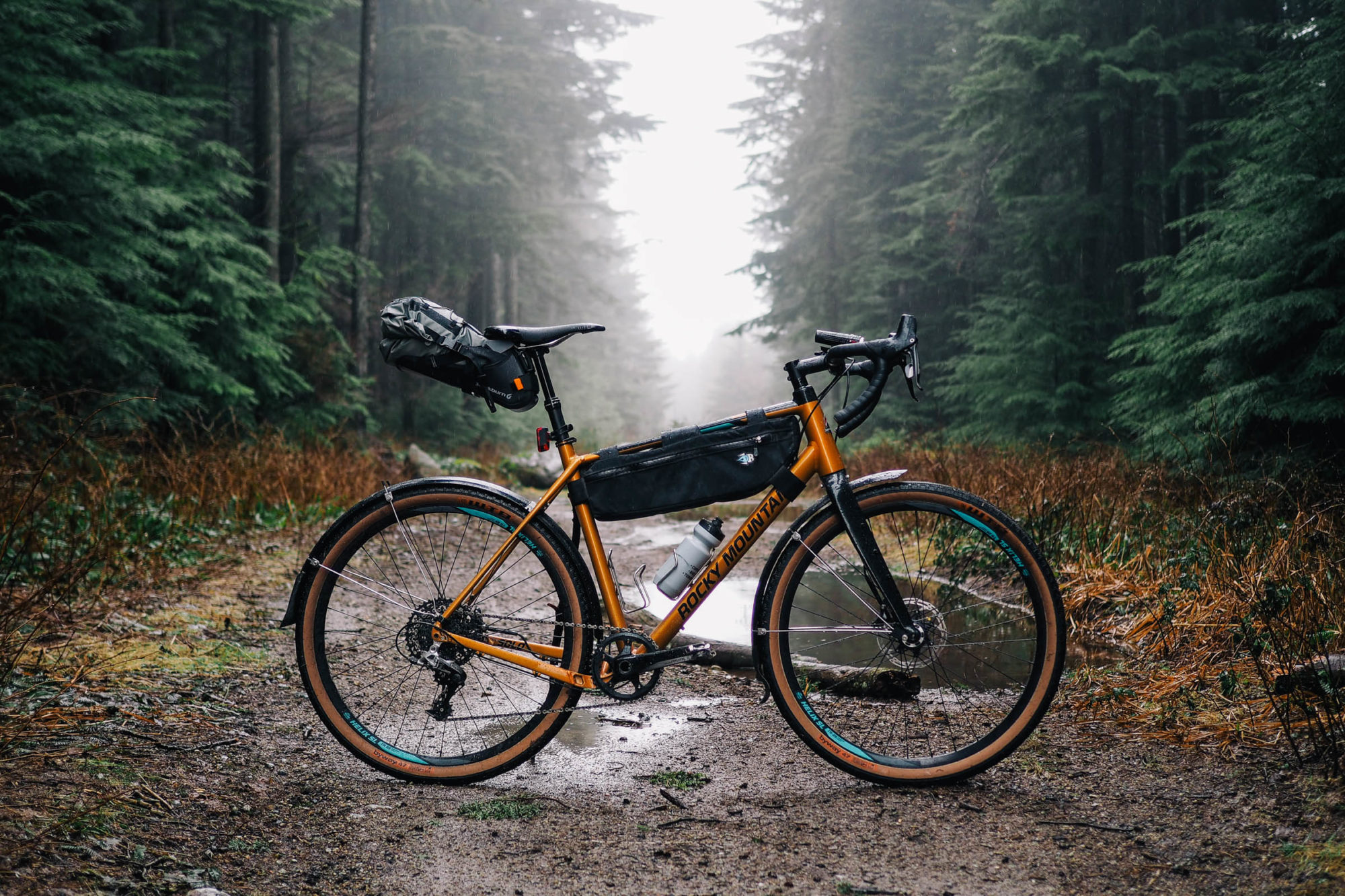
Pros
- Modern features like thru-axles, big tire clearance, and various mounts.
- Fast and stable on gravel, dirt, and pavement.
- Lower price point than some carbon and steel options.
- Versatile build kit that will make any type of road very fun.
Cons
- Aluminum frame isn’t the most comfortable, and is best suited for long day rides and lightweight overnighters.
- A few component swaps may be in order, including the alloy bars, tape, dropper post lever position, and tires.
- Some of the threaded bosses could be tweaked to be more effective, fingers crossed for 2020.
- Stock WTB Byway tires showing damage / signs of wear after a few months of riding.
- Stock SRAM rear hub may not have greatest track record when it comes to reliability.
- Model/Size Tested Rocky Mountain Solo 70, Large
- Weight (as tested) 23.5 pounds (10.6 kg)
- Rider Height/Weight 6’1″/185 lb (185cm/84kg)
- Price $2,599
- Place of Manufacture Taiwan
- Manufacturer’s Details Bikes.com
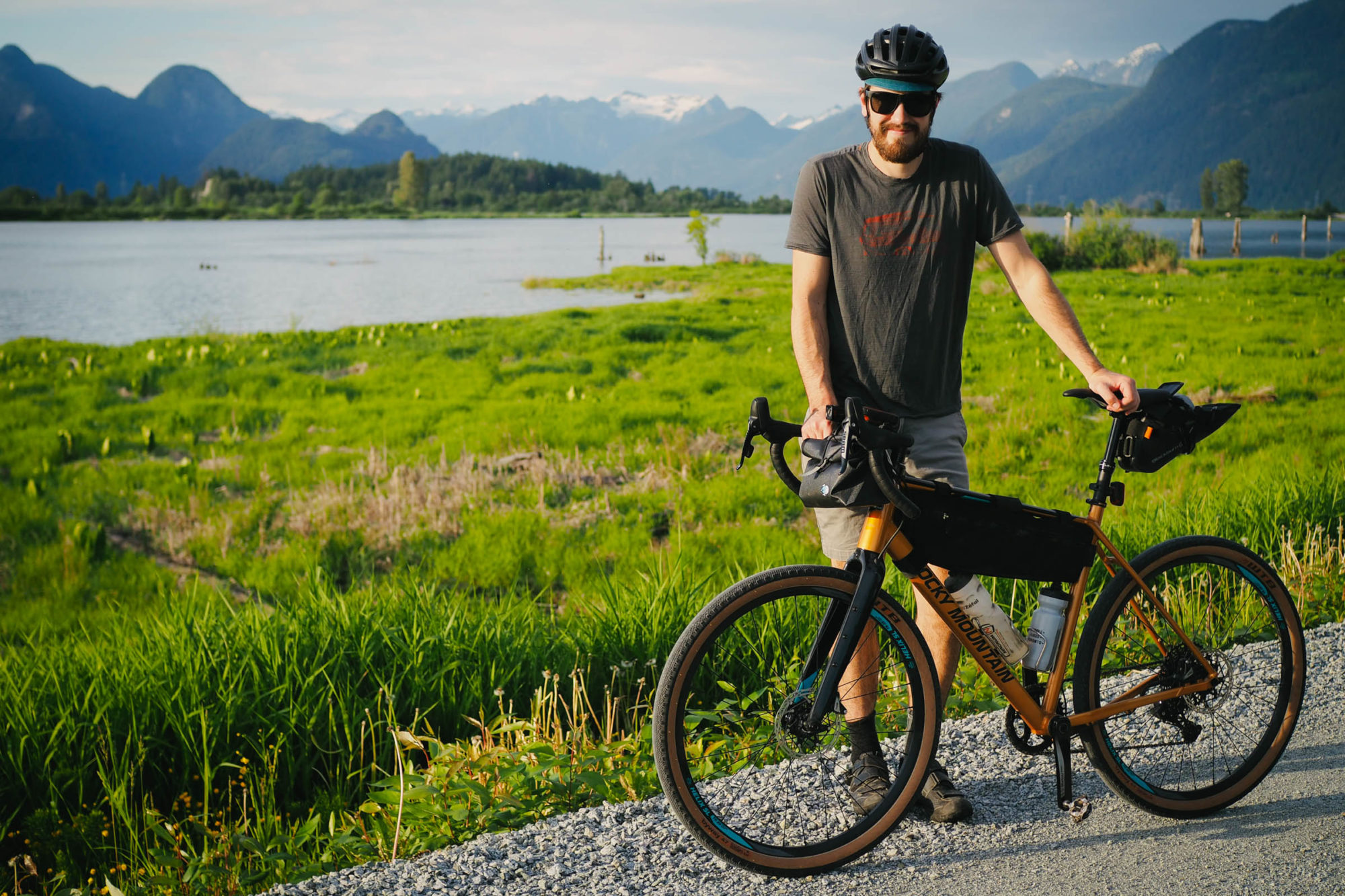
Wrap Up
I didn’t know what to expect from the Rocky Mountain Solo. All I had to go on was the cleverly executed launch video, The Long Way. The short film showcases US Olympian Sam Schultz living and travelling in his converted cargo van, ripping the Solo around wherever and whenever he wants. It’s a dreamy combination, and coincidentally my partner and I have been converting a cargo van of our own to seek out similar experiences. Bikes and vans pair well together.
The Solo definitely fills the ‘road’ gap that I crave every now and again. I love being able to get to work quickly when I need to, or easily take a more adventurous route if I want to. It’s a fast bike with all kinds of modern features that will appeal to most riders out there, especially those who already own a bike that’s better suited to singletrack and technical riding. I’m not really a fan of the term ‘quiver killer’, referring to one bike that can take on all types of riding. It’s misleading. I doubt any drop-bar bike will ever handle singletrack-heavy bikepacking the way a hardtail or full-suspension mountain bike can. However, if you’re more interested in the paved, gravel, or dirt road side of things, the Rocky Mountain Solo 70 is a smart choice and a super capable bike.

Rider Profile
Currently transitioning into full-time van life, Miles enjoys riding flowy singletrack, exploring service roads, and often finds himself further from home than he planned. The Rocky Mountain Solo 70 was loaned to Miles for this review.
- Height: 6’1” (185 CM)
- Weight: 185 lbs (84 KG)
- Inseam: 33” (83.8 CM)
- Current Location: Port Coquitlam, BC
- Daily Driver: Why Cycles S7
- Favorite Route: Vapor Trail
Please keep the conversation civil, constructive, and inclusive, or your comment will be removed.













